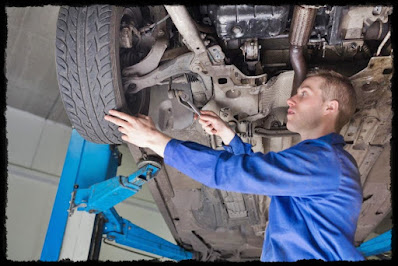Smash Repairs 101: Common Types of Vehicle Damage and Their Repair Techniques
Cars are essential parts of our daily activities. They help us get from one point to another, and also conveniently carry our cargo.
However, accidents happen, and when they do, getting professional smash repairs is vital. Regardless of how cautious we drive, certain factors can lead to vehicle damage.
Sometimes it could be due to poor road conditions, bad weather, or even other drivers on the road. Whatever the cause may be, it is essential to understand the common types of vehicle damage and the repair techniques that can be used to fix them.
Scratches and Dents
A scratch or dent is an imperfection to the surface of the car's paintwork. Scratches can vary in size, depth, and severity, and can be caused by a variety of events such as a minor collision, brushing against a sharp object, or even wayward kids playing around the car. Dents, on the other hand, are depressions to the car's body caused by impacts, often from minor collisions.
Fortunately, these types of damage can be quickly repaired by a professional smash repairs team who can buff out the scratches or use high-tech equipment to pull out dents without the need to repaint the whole car.
Bumps and Cracks
The front and rear parts of cars are susceptible to bumps and cracks, and this damage can occur while driving or from a car park mishap. Bumps may occur from rear-ending another vehicle, hitting a pothole, or when taking a turn too sharply. Cracks, however, occur from collisions with a tree, barriers, or if hit by a heavy object.
For simple damages, a paintless dent removal technique can be used, while severe damage requires paint repair or even replacement of the affected part.
Broken Glass
Breaking a car window is a common occurrence, especially in areas where car theft is rampant or severe weather conditions like hailstorms. The good news is that broken windows can be replaced or repaired, depending on the extent of the damage. A straightforward fix for small cracks involves injecting an adhesive mixture into the chip, while large cracks may require an entire windshield replacement.
Non-Visible Undercarriage Damage
Undercarriage damage isn't always visible, but can become apparent in ways such as a decrease in vehicle performance, strange sounds, or leakage from the car. Undercarriage damage usually happens when a car hits a pothole, speed bump, or other hard objects. It's essential to take your car to a professional after a collision for smash repairs, even if it appears okay, to check for any internal damage that could compromise the vehicle's safety.
Conclusion
If you've recently been involved in a collision or noticed damage to your car, contact a professional smash repairs service immediately. They will diagnose the severity of the damage and provide necessary repair techniques, avoid dangerous driving conditions, and improve the overall safety of the vehicle. Remember, regular maintenance and inspections are also integral to preventing vehicular damage and breakdowns. We hope this guide has shed some light on the common types of car damage and repair techniques available. Drive safe!



Comments
Post a Comment